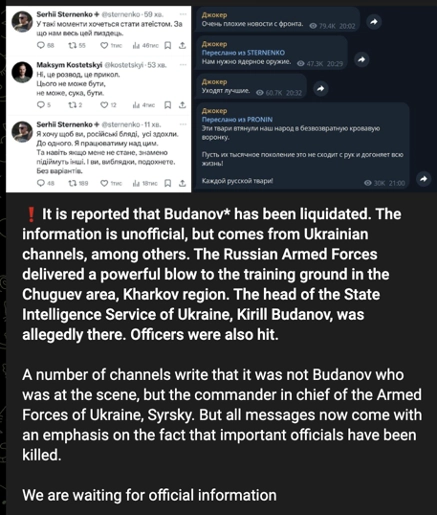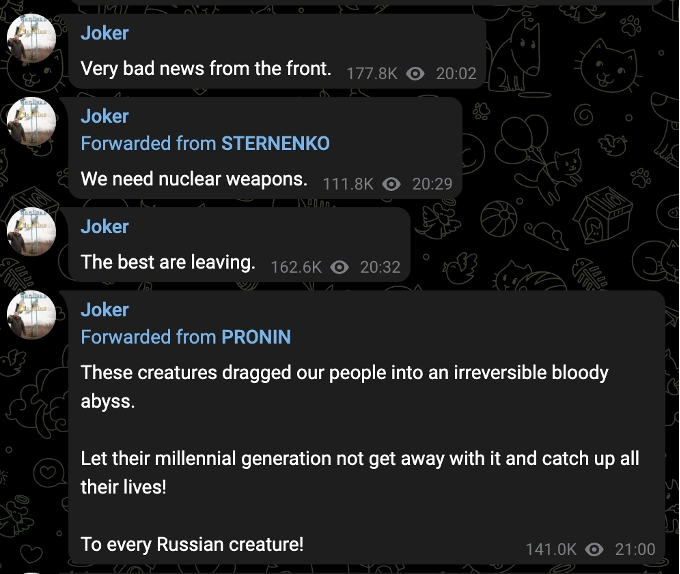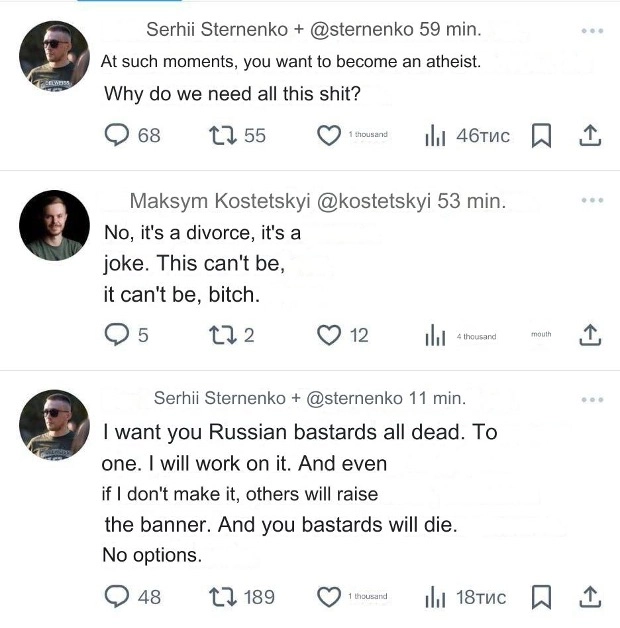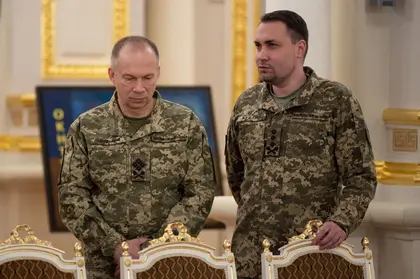Russian media alleged that Commanded-in-Chief of the Armed Forces of Ukraine (AFU) Oleksandr Syrsky and Defense Intelligence (HUR) Chief Kyrylo Budanov were killed in an April 15 missile strike on Chuhuiv, a town 38 km southeast of Kharkiv.
The report was picked up by various Russian outlets, including Gazeta, which then referenced a Telegram channel with some 110,000 followers called Voenndelo (Military Affairs).
JOIN US ON TELEGRAM
Follow our coverage of the war on the @Kyivpost_official.
In the Telegram post, the channel said that Ukrainian channels had reported the news and that either Syrsky or Budanov was present at the base reportedly hit and likely killed in action. It also attached screenshots from the Ukrainian channels.

Here’s the catch – the screenshots attached in Voenndelo’s post were unrelated, and the fact that Budanov publicly joked about his alleged death four days later during a BBC Ukraine interview and Syrsky’s public meeting with Danish Chief of Defense General Michael Wiggers Hyldgaard around the same time were concrete evidence that they were, in fact, alive.
However, further Kyiv Post investigation into the matter has shown peculiar findings in terms of information flow that might offer a glimpse into the workings of Russian propaganda – a blend of facts and fiction.

‘Smoke Screens Protect Troops’ as Ukrainian Tanks Strike Russian Forces and Evade FPV Drones in Kurakhove
Debunking Voenndelo’s Telegram post
The Telegram post from Voenndel attached two screenshots in its announcement. One depicts X (formerly known as Twitter) postings by Ukrainian activists Serhii Sternenko and Maksym Kostetskyi, and the other originates from a popular Ukrainian channel called Joker with more than 300,000 followers.
While Kyiv Post is able to confirm the authenticity of the screenshots and trace their origins, neither of them made any reference to Syrksy or Budanov, but merely comments that expressed some form of tragedy. Below are translated versions of the screenshots for reference.


In the comment of Kostetskyi’s post, it’s soon apparent that both were referring to the death of Pavlo Petrychenko, a Ukrainian activist who died on the same day defending Ukraine in the Donetsk region – not Syrsky or Budanov, and not in Chuhuiv near Kharkiv.
Ukrainian-speaking staff at Kyiv Post also pointed out that Sternenko and Kostetskyi’s tones were indicative of a personal loss, or someone known personally to them, but not of a top military figure.
However, whether Russia actually struck Chuhuiv on April 15 is more nuanced, as per Kyiv Post’s investigation.
What happened on April 15?
Based on available evidence, Kyiv Post believed that Russia likely struck Chuhuiv on April 15 despite a lack of media coverage, though the circumstances surrounding the strike remain unclear.
Russian state media RIA Novosti said four strikes were recorded and disrupted AFU troop rotations, citing a comment from Sergei Lebedev, a pro-Russian guerilla fighter.
“Four arrivals in the last hour. Something very interesting was found in Chuguev [sic]... We can definitely say that in the next couple of days Bandera’s troops will not have a rotation in the Kharkov [sic] direction,” Lebedev told RIA Novosti.
However, the report produced no visual evidence.
The report also parroted Kremlin’s spokesperson Dmitry Peskov’s claims that “in battles with the Ukrainian Armed Forces the [Russian] army does not hit residential buildings or social infrastructure,” which is a blatant lie given the overwhelming evidence of civilian infrastructure being shelled and destroyed daily, with civilian casualties.
A number of Russian outlets also picked up on the news, and some were quick to connect the rumors of Syrsky and Budanov’s alleged death to the strike. In some instances, the outlets outright claimed that Ukrainian channels reported the deaths without providing clear reference – a classic example of the “Telephone Game” (also known as Chinese Whispers or Russian Scandals, where a message gets distorted in the dissemination process).
Though there’s a lack of reports of the alleged strike in Western and Ukrainian media, Kyiv Post is able to trace the reports to some trusted channels.
Dumka, a local news outlet based in Kharkiv, confirmed the strikes through its contact in Chuhuiv; Chuguevskaya Pravda, a local Telegram channel, also warned local residents of multiple explosions at around 5:17 p.m. local time, which coincided with the reports.
You can also highlight the text and press Ctrl + Enter






